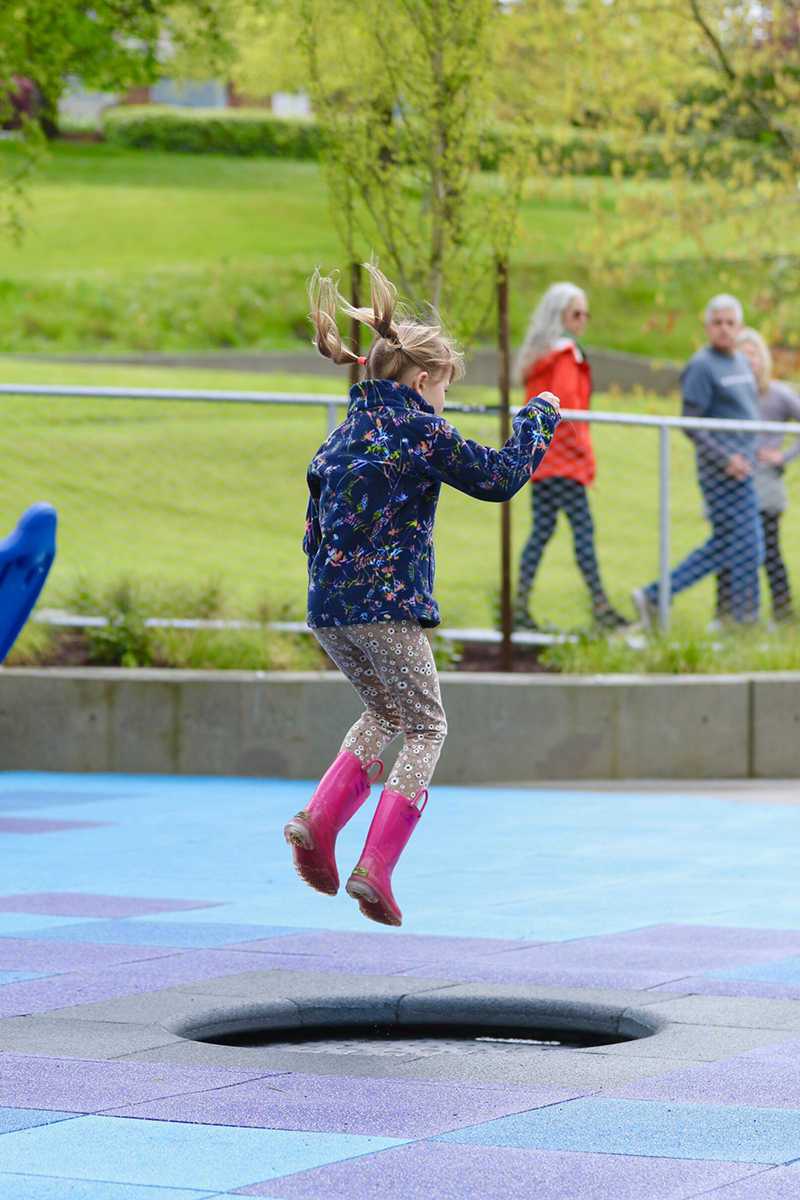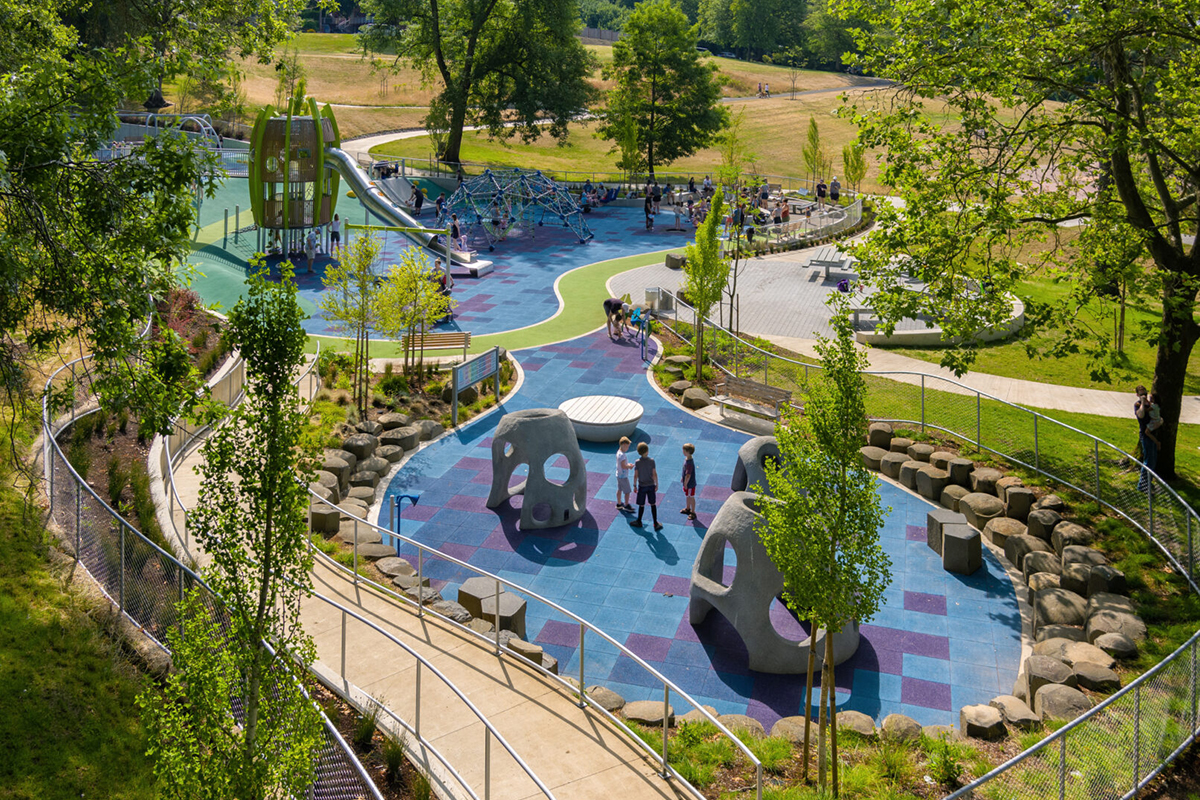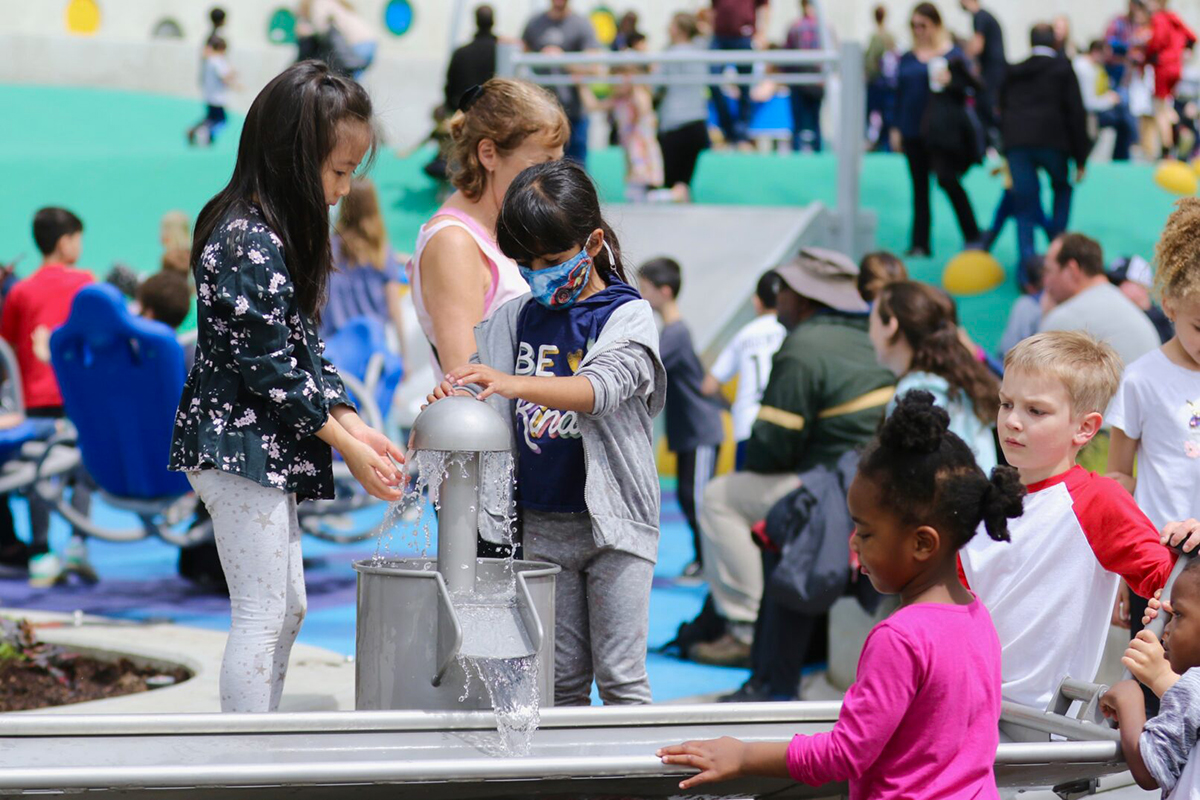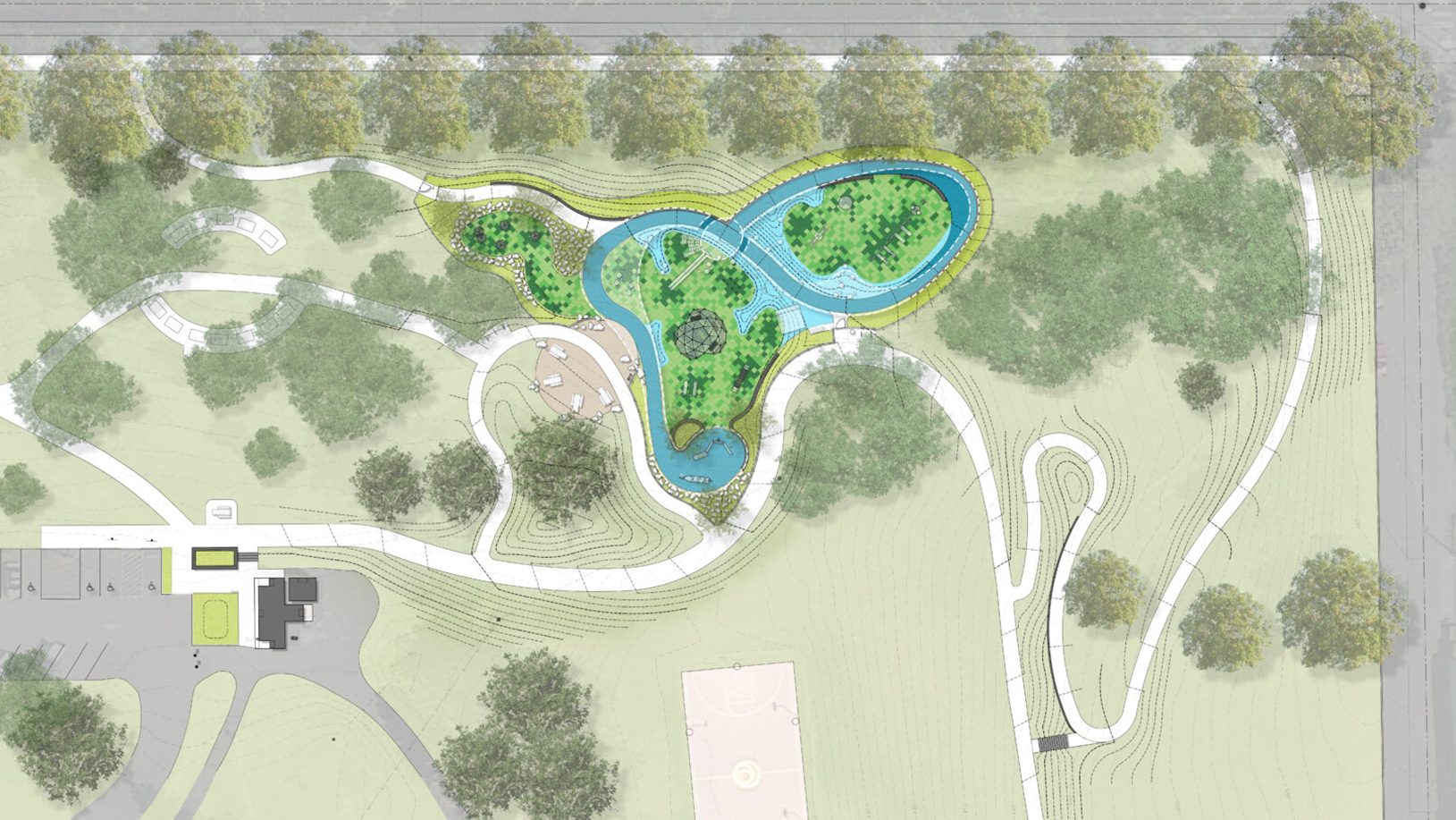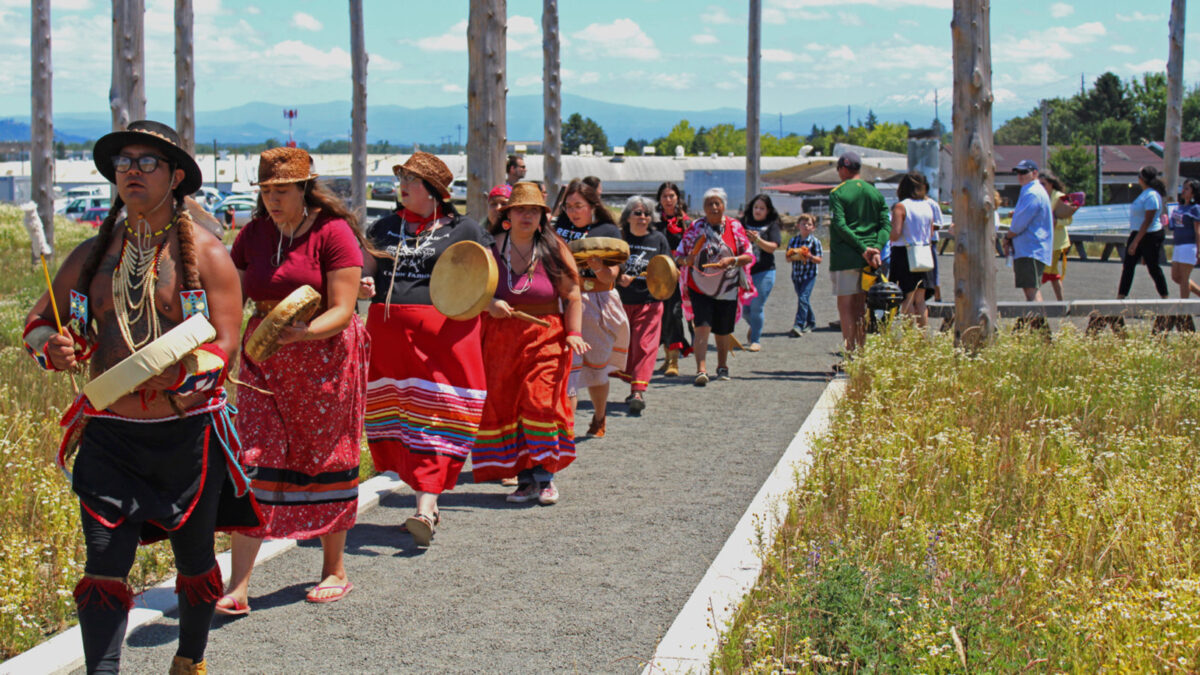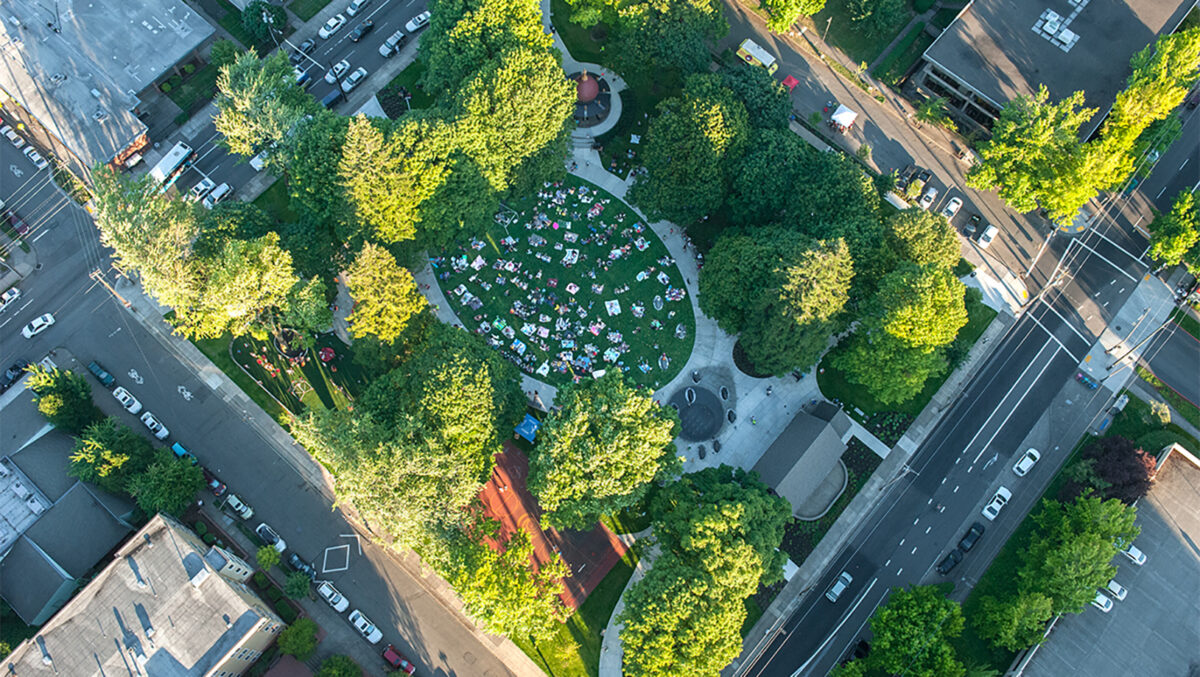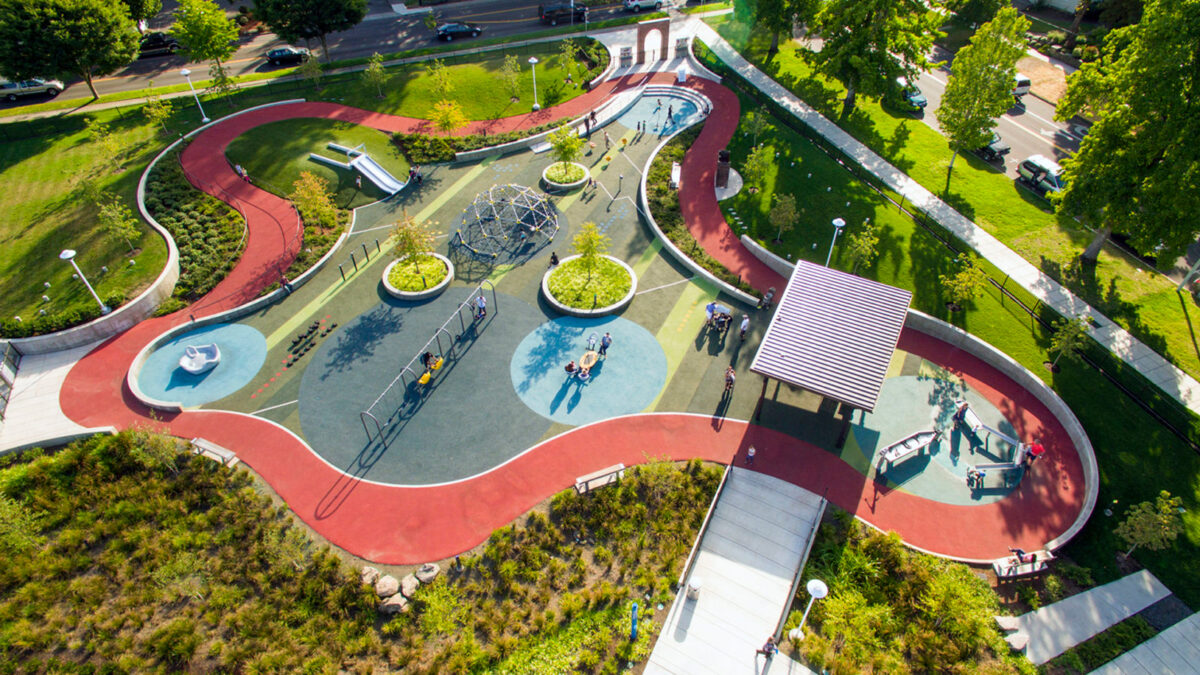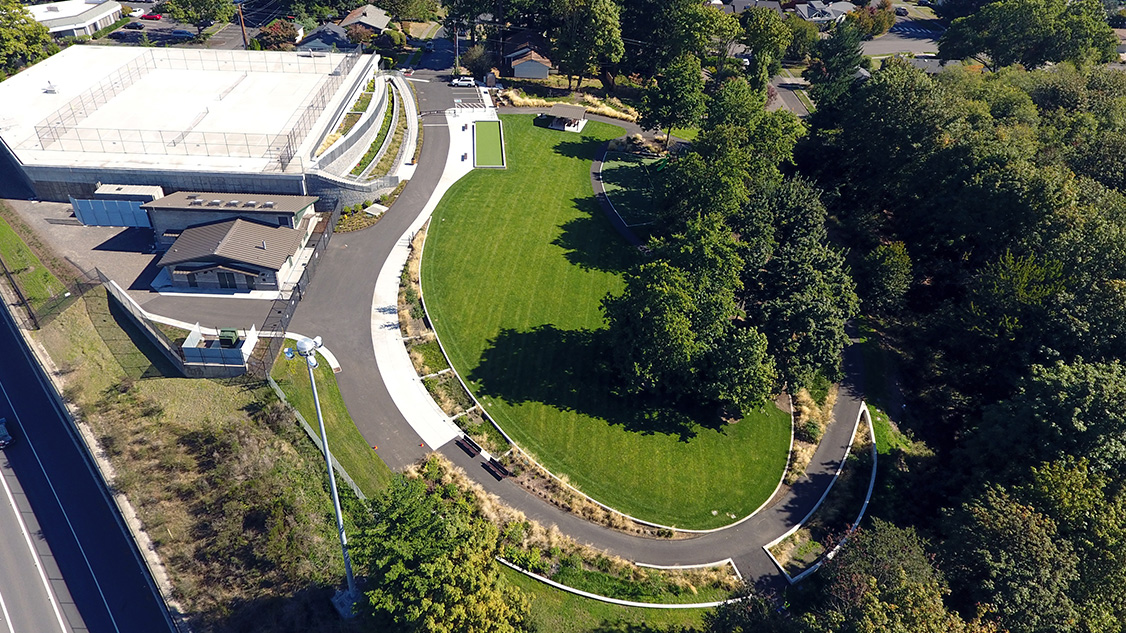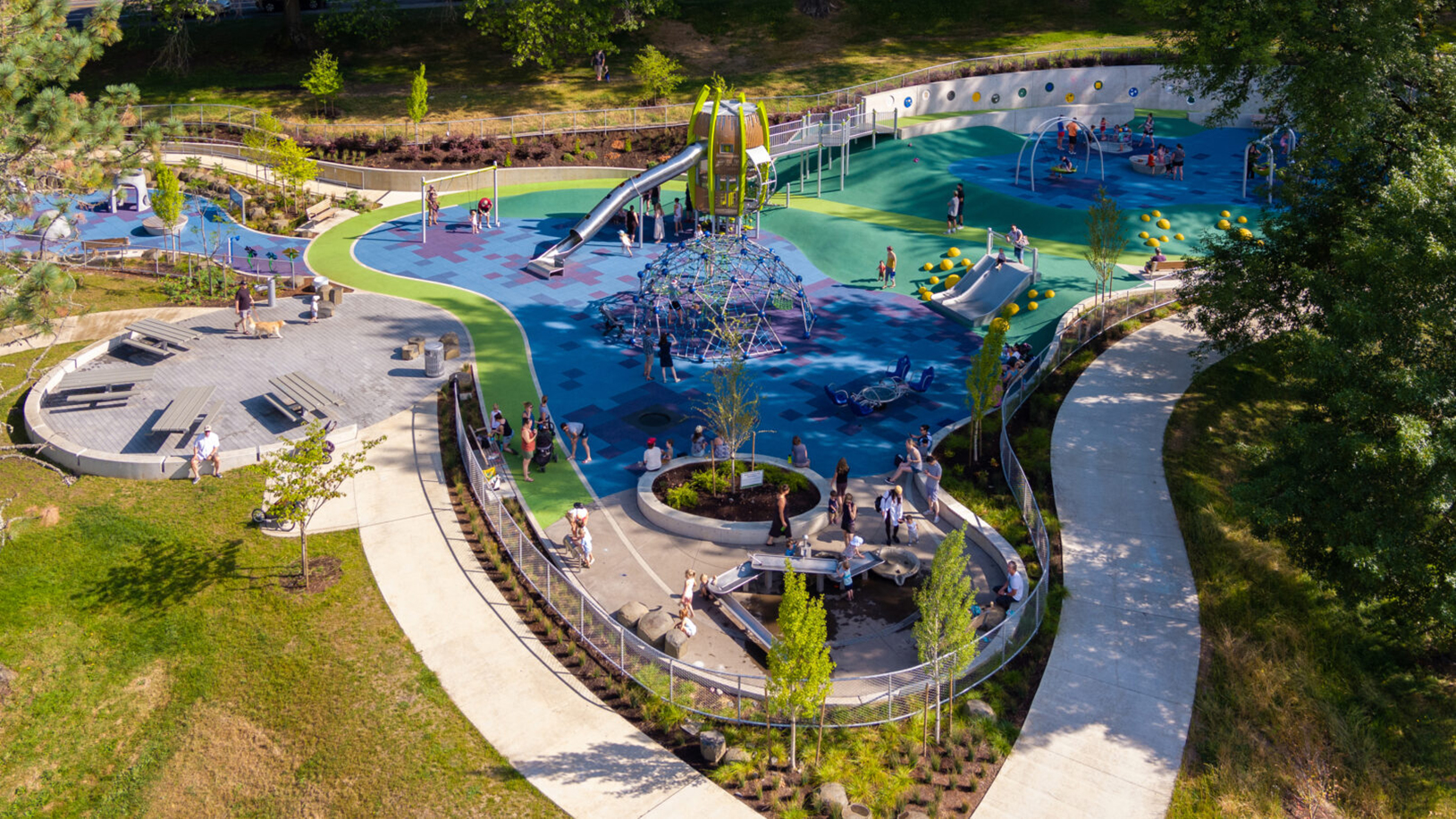
The Gabriel Park Playground is Portland’s newest and most inclusive playground, tucked into the northeast corner of Gabriel Park, a 91-acre park in SW Portland.
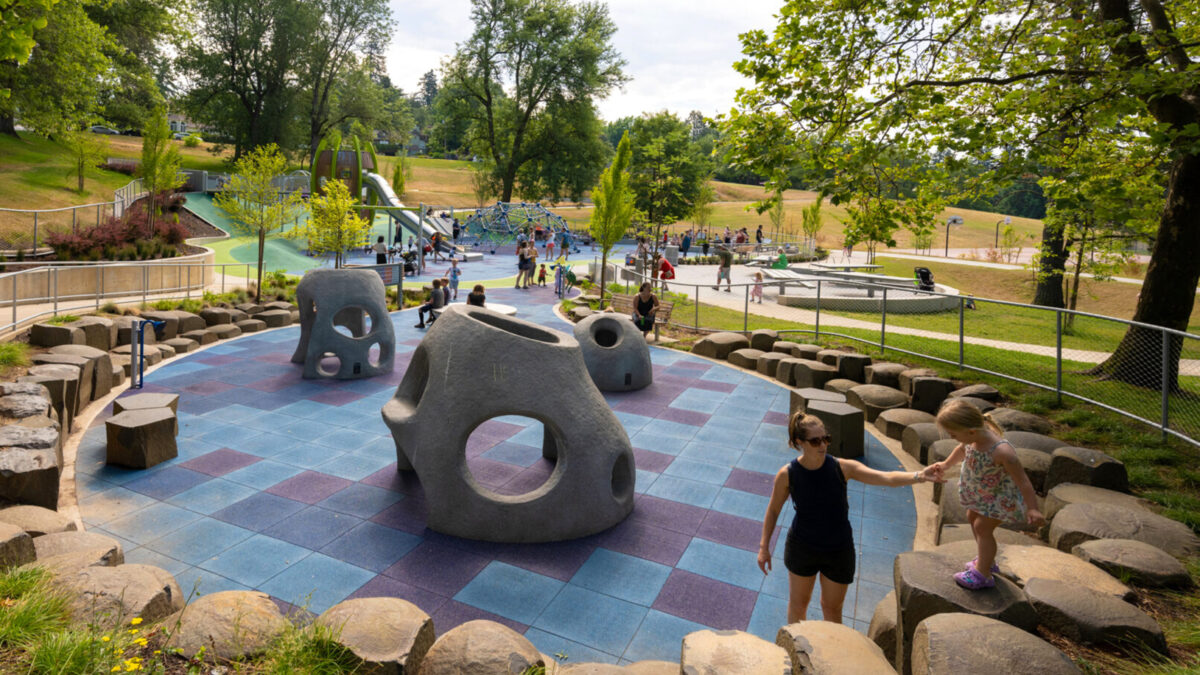
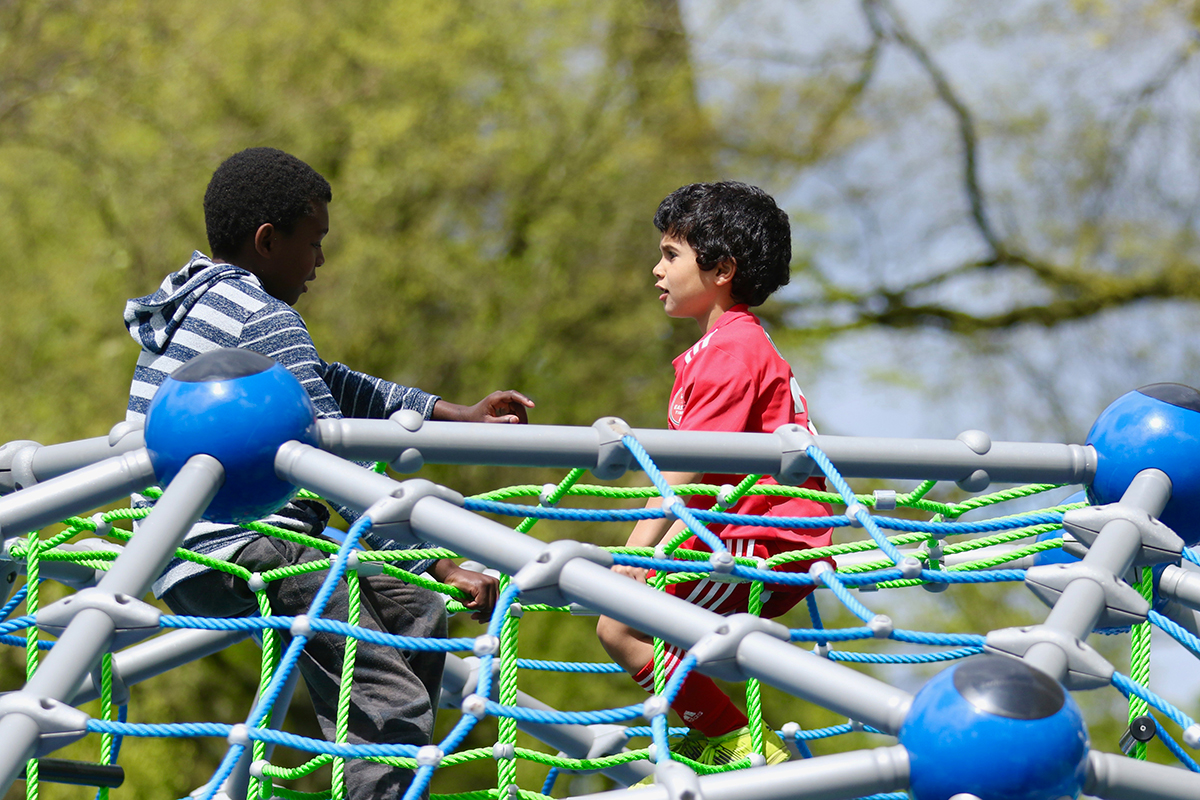
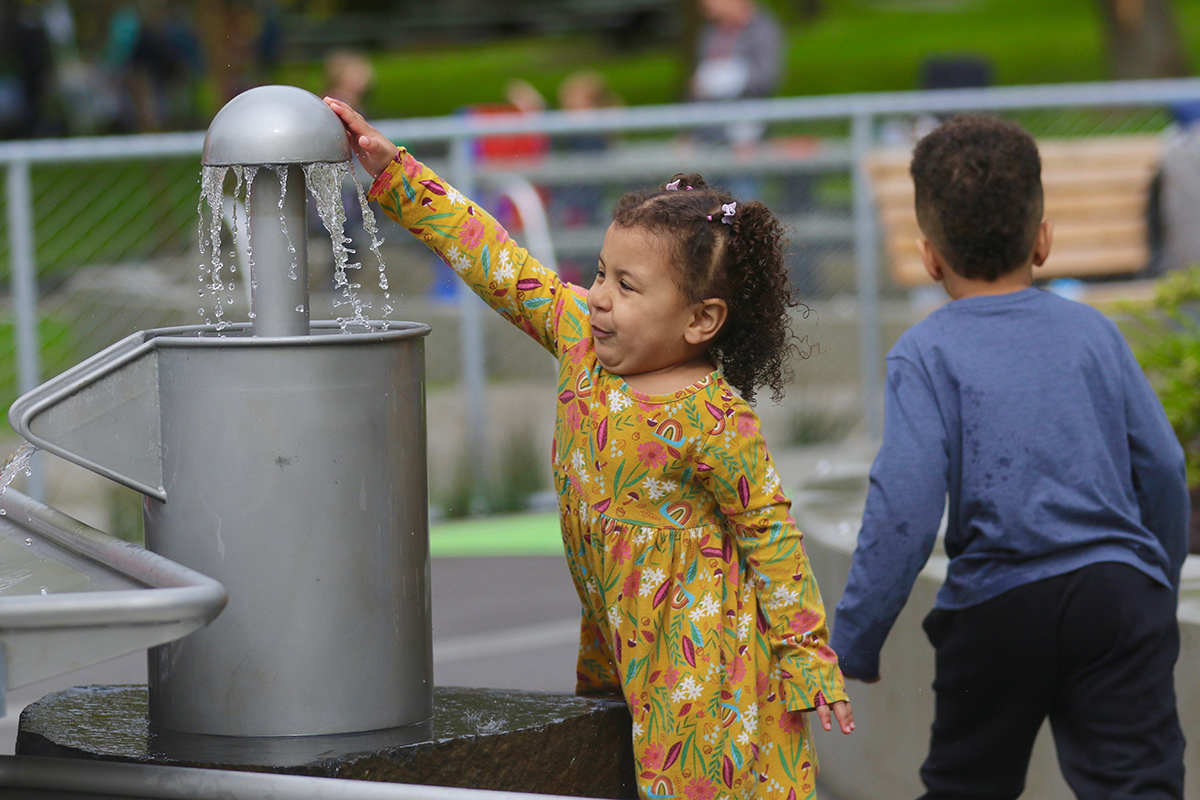
With over 47 feet of grade drop from one end of the project to the other and mature stands of oaks, pines, and ash throughout, the design team was challenged to locate the playground without vastly changing the character of the area. In addition, the team was charged with providing fully accessible connections from the renovated restroom on the lower west end up to the existing public transit stop to the east.
By carefully configuring the playground design the steep slopes were also an asset. By utilizing long pathways within the playground, the design team created a more dynamic and multi-leveled play experience that creates an exciting sense of adventure for children and opportunities to create at-grade connections with the tallest (and coolest) elements of the park.
The site also features a drainage reserve, a protected drainage feature that runs through the project. By locating the playground to the edge of this feature, the design team was able to enhance the drainage area with native vegetation and use the edge to manage stormwater on the site.
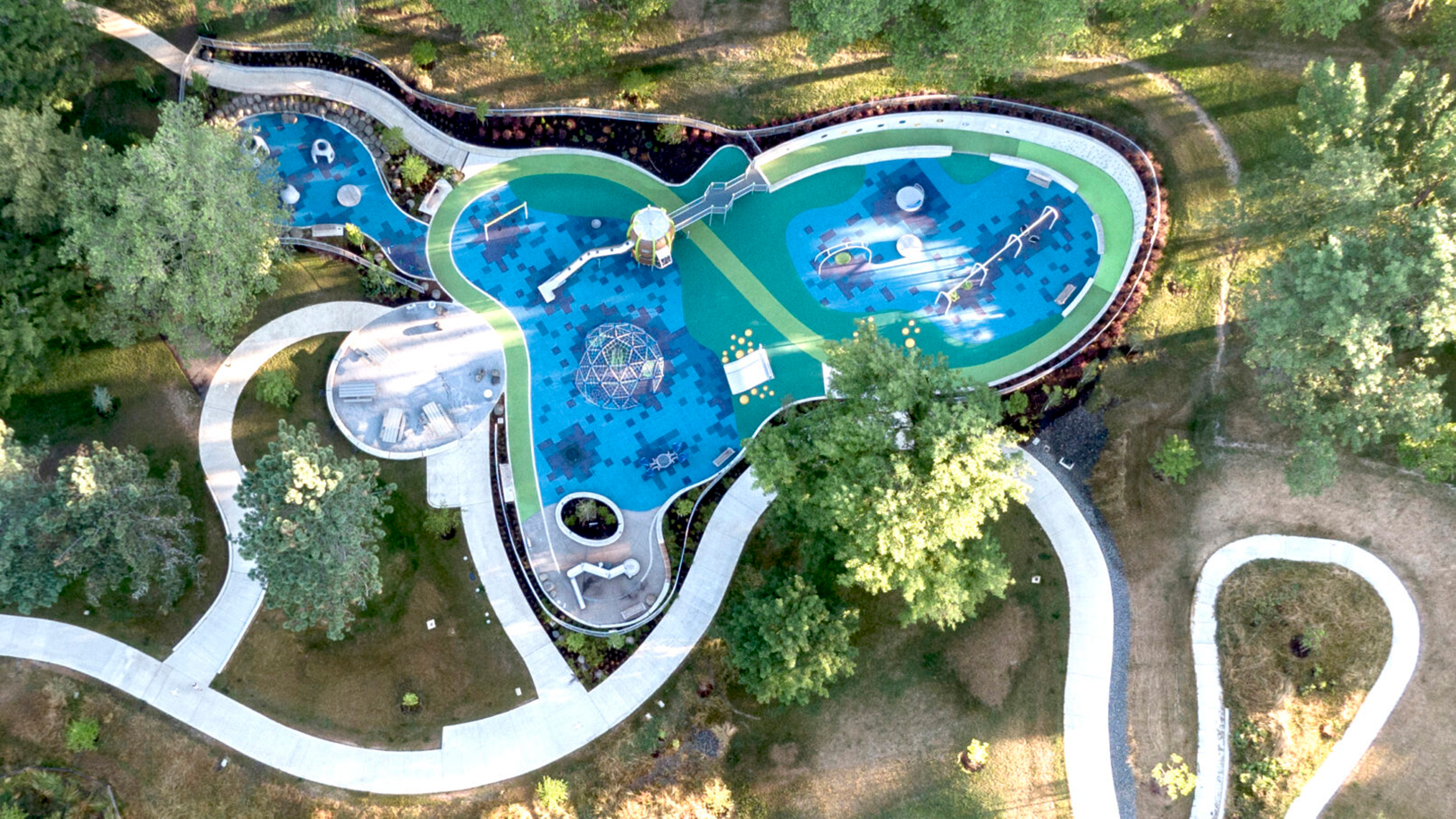
The project began with multiple meetings with a stakeholder group – a group comprised of parents of children with special needs, adults with special needs, neighborhood school-age kids, and members of the Somali Community. The group collectively told personal stories about challenges facing children who engage in public play spaces and techniques the design team could use to mitigate those challenges.
For example, the team explored how children with autism would interact with the space and how fencing, quiet spaces, and an orientation pathway could be integrated into the design to make the playground successful for that group.
Other areas of exploration included tracing the pathways of children with mobility challenges to explore whether arriving at a particular destination with a group of their peers could result in an embarrassing moment of turning back because the challenge had become too great for them.
